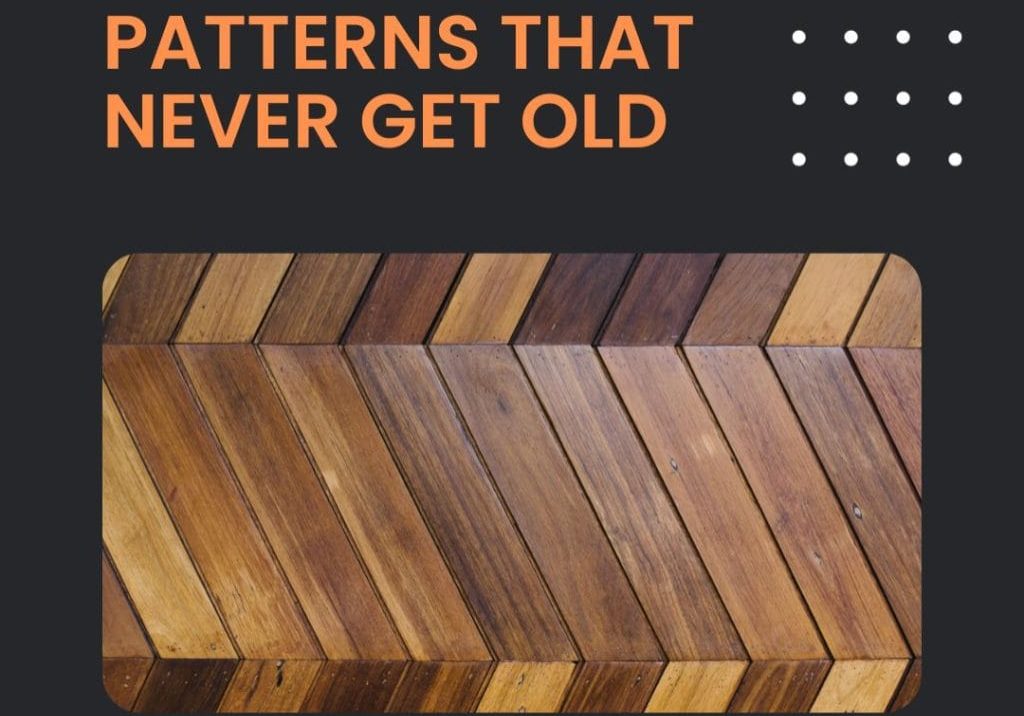When selecting the appropriate flooring for your business premises, choosing between hickory and oak often presents a problem. As a business owner, the hickory vs oak flooring decision should not be taken lightly. After all, the type of flooring can significantly impact your premises’ aesthetics, durability, and maintenance needs. This guide aims to shed light on the Hickory vs. Oak: What To Choose difficulty, providing you with key insights to make an informed decision that aligns with your business needs and budget.
Basics of Hickory Flooring
Hickory, a remarkable and strong hardwood, is a popular choice for flooring due to its unique features and notable durability. As we delve into the basics of hickory flooring, we’ll uncover why this might be the ideal choice for your business premises.
Characteristics of Hickory Wood
Hickory wood is renowned for its remarkable hardness and exceptional impact resistance, making it an ideal choice for areas with high foot traffic. Its distinct grain pattern adds a rustic charm to any space, with varying shades of light to dark brown. Notwithstanding its higher cost compared to other hardwoods, Hickory’s durability and unique aesthetics make it an appealing option for flooring.
Janka Hardness Rating
The Janka hardness rating is a scale used to measure the resistance of wood to denting and wear, essentially quantifying its hardness. This scale is an important indicator for flooring selection, as a higher Janka rating means the wood is more resilient to dents and scratches, making it ideal for high-traffic areas. In the hickory vs. oak flooring debate, understanding the Janka ratings of each can aid in your decision-making process.
Basics of Oak Flooring
Oak, a time-tested and widely admired hardwood, is revered in the flooring industry for its inherent strength, classic appeal, and affordability. As we explore the fundamentals of oak flooring, you’ll discover why it remains a steadfast option for businesses, making the hickory vs oak flooring decision more nuanced.
Features of Oak Wood
Oak wood is celebrated for its strength, versatility, and distinct grain pattern, which imparts an elegant yet warm vibe to any room. Its color ranges from light to medium brown, with white oak offering a slightly darker hue. Also, oak’s dense structure and high Janka rating signify impressive durability, making it an affordable yet lasting flooring option for businesses.
Janka Hardness Rating of Oak to Hickory
The Janka hardness rating plays a vital role in the hickory vs. oak flooring debate. Hickory holds a rating of 1820, showcasing its exceptional resilience. Conversely, red oak, a common choice for flooring, stands at 1290, while its counterpart, white oak, fares slightly better at 1360. Although oak is less hard than hickory, it still offers commendable durability – a testament to its ubiquity in flooring.
Aesthetic Differences
Regarding the visual appeal of hickory vs oak flooring, both offer distinct aesthetics that can significantly influence the ambiance of your business environment. Let’s delve into the aesthetic differences between these two popular types of hardwood flooring.
Visual Distinctions Between Hickory and Oak
Hickory, characterized by its intricate grain patterns and a broader spectrum of colors from pale to dark brown, exudes a rustic charm. On the other hand, Oak boasts a more uniform grain pattern and a narrower color range, offering a classic and subtly sophisticated aesthetic that easily adapts to various décor styles. The choice depends on whether you desire a bold, rugged appearance or a timeless, elegant look.
Grain Patterns and Color Variations
The grain patterns and color variations of hickory and oak flooring can substantially affect your business environment’s overall look and feel. Hickory’s complex grain and wide color spectrum generate a bold, rustic ambiance, while Oak’s uniform grain and narrower color range create a classic, understated elegance. Ultimately, your choice should align with the atmosphere you aim to cultivate in your business premises.
Durability and Business Traffic
In a business environment, where foot traffic can be significantly higher than in residential settings, the durability of your chosen flooring material is a critical consideration. Let’s delve into how the durability of hickory vs. oak flooring stands up to the demands of business traffic.
Wood Type for High-Traffic Business Areas
With its higher Janka rating, Hickory proves to be superbly suitable for high-traffic areas, offering exceptional resistance to wear and tear. On the other hand, while more susceptible to damage, Oak still provides commendable durability, making it a cost-effective solution for areas with moderate foot traffic. The decision between hickory vs. oak flooring ultimately boils down to balancing your specific traffic needs with your budgetary constraints.
Longevity of Hickory and Oak
Hickory, renowned for its exceptional hardness, often boasts a longer lifespan in busy commercial settings, easily withstanding heavy footfall. Alternatively, while slightly less hardy, oak can offer considerable longevity, especially when well-maintained. Thus, hickory and oak can serve as enduring business flooring choices, with the ultimate decision hinging on specific traffic patterns and maintenance capabilities.
Cost Considerations
When examining the hickory vs. oak flooring debate through a financial lens, understanding the cost implications of each option is pivotal. Let’s navigate the cost considerations associated with these two popular flooring choices.
Upfront Costs and Long-Term Value
Hickory flooring, known for its superior durability, commands a higher upfront cost than oak. Its longevity in high-traffic business settings often justifies this, providing long-term value.
Meanwhile, oak, while less resilient than hickory, is more budget-friendly upfront. Its respectable durability ensures it still offers a good return on investment over time, especially in moderate-traffic areas.
Maintenance Costs and Potential Return
When considering hickory vs. oak flooring, maintenance costs also come into play. The durability of hickory makes it less susceptible to damage, potentially reducing upkeep expenses. However, its intricate grain can pose challenges when refinishing. On the other hand, oak’s lower hardness may require more frequent maintenance, but its simple grain makes refinishing easier. Both types of wood can enhance property value, but Hickory’s unique character may appeal more to certain buyers.
Installation Implications
Installation is another crucial aspect in the hickory vs oak flooring debate. The process, difficulty level, and installation costs can greatly influence your flooring decision. Let’s explore how these factors impact your choice between hickory and oak.
Complexities of Installing Hickory and Oak
Hickory flooring installation can pose challenges due to its hardness, requiring professional handling and potentially elevating labor costs. On the other hand, Oak is comparatively easier and less costly to install due to its lower hardness rating. However, both types require proper acclimatization and subfloor preparation to ensure a successful installation.
Right Installation Method for a Business Setting
When opting for the right installation method, consider the nature of your business operations and the associated footfall. A glue-down installation method is highly recommended for high-traffic areas due to its superior stability. However, a nail-down or floating installation suffices for moderate-traffic areas, offering cost-effectiveness and ease of installation.
Environmental Impact and Sustainability
In today’s eco-conscious world, your flooring choice’s environmental impact and sustainability cannot be overlooked. Let’s explore how the hickory vs oak flooring debate fares from a green perspective.
Eco-Friendliness of Hickory and Oak
Hickory and Oak both have substantial environmental credentials. Oak, being abundant and widely available, is often sourced sustainably. Though less common, Hickory is typically harvested from managed forests, adhering to sustainable practices. Both types of wood are natural and biodegradable, providing an eco-friendly flooring option compared to synthetic alternatives.
Importance of Sustainable Choices
Making sustainable choices is becoming increasingly important for businesses in the modern era. Adopting eco-friendly materials like oak or hickory flooring not only helps conserve the environment but can also enhance a company’s brand image, signaling a commitment to responsible practices. Moreover, it can attract environmentally conscious clients, providing a competitive edge in the business landscape.
Case Studies
As we delve into the real-world implications of the hickory vs. oak flooring decision, let’s look at case studies that depict businesses that have made one choice.
Real-World Examples
A locally renowned restaurant, “The Grub Hub,” chose hickory flooring to withstand heavy daily footfall, and years later, the floors still exude rustic charm. Conversely, “Mellow’s Bookstore,” a quaint bookstore, opted for oak flooring. The oak floors handle the moderate traffic of book lovers well, which contributes to the store’s warm, inviting ambiance. These businesses reflect how Hickory and Oak can meet diverse commercial demands effectively.
Outcomes and Satisfaction Levels
The outcomes and satisfaction levels from both decisions have been positive. “The Grub Hub” reports that their hickory flooring has been maintained excellently against heavy footfall, requiring minimal maintenance. At the same time, “Mellow’s Bookstore” praises the warmth and character that the oak flooring adds to their space, enhancing the customer experience. Both businesses recommend their respective choices, underlining the importance of matching the right wood type to specific business needs.
Conclusion
Traffic, cost, aesthetics, installation, and environmental impact largely influence the hickory vs oak flooring debate. Both options offer their unique strengths, with Hickory excelling in durability and unique aesthetics, while Oak provides affordability, ease of installation, and a classic appeal. The choice ultimately boils down to business-specific needs and preferences, ensuring the chosen floor type aligns with the company’s vision and operational demands.










